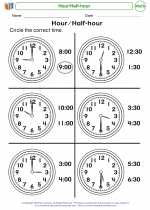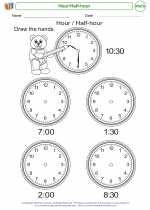Understanding Half-Hours
In telling time, half-hours are the intervals that occur halfway between each hour on the clock. Each half-hour consists of 30 minutes. Understanding half-hours is an important concept in learning to tell time and can be introduced to children in a simple and engaging way.
Teaching Half-Hours to Kindergarteners
When introducing half-hours to kindergarteners, it's helpful to use a visual aid such as a clock. Start by pointing to the numbers on the clock and explaining that each number represents an hour. Explain that the small hand on the clock points to the hour, while the long hand points to the minutes.
Then, demonstrate how the long hand moves from the 12 to the 6, indicating that it's half-past the hour. Encourage children to count the minutes as the long hand moves around the clock. Reinforce the concept by asking questions such as, "What time is it when the long hand is on the 6?"
Activities to Reinforce Half-Hours
Engaging in activities that involve half-hours can help reinforce the concept. You can use a variety of tools such as interactive clock games, printable worksheets, and fun crafts to make learning half-hours enjoyable for kindergarteners. For example, you can have the children create their own paper plate clocks and practice setting the hands to show different half-hour times.
Assessment of Half-Hour Understanding
To assess children's understanding of half-hours, you can have them participate in time-telling activities. Present them with scenarios such as "It's 3:30, what time will it be in half an hour?" or "If it's 5:00 now, what time was it half an hour ago?" Observing their ability to manipulate the clock hands and answer these questions will provide insight into their comprehension of half-hours.
By actively engaging children in learning about half-hours and providing opportunities for practice and reinforcement, kindergarteners can develop a solid understanding of this time concept.


